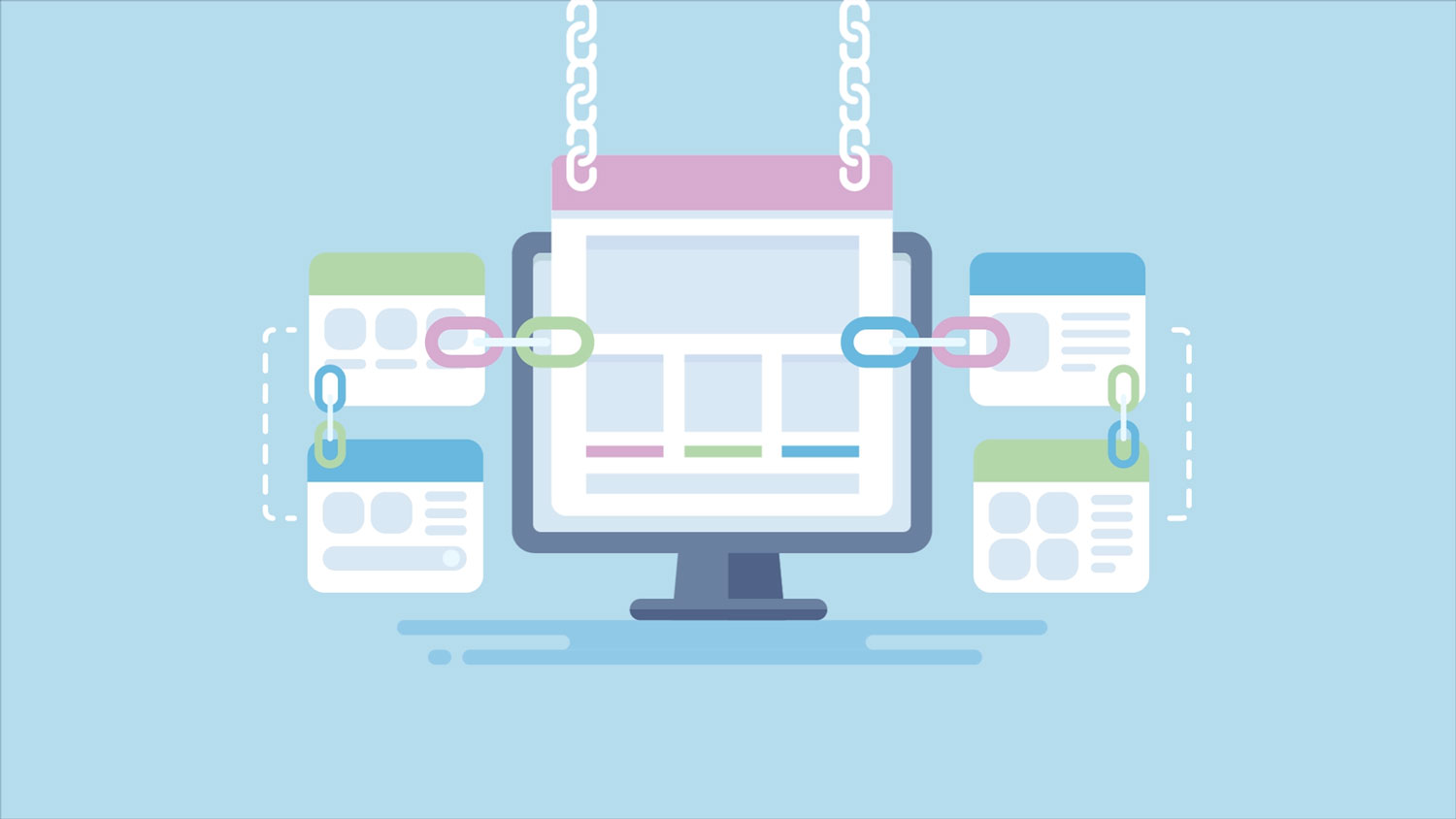Internal linking is a phrase that often appears when SEO is being discussed and it is considered to be an important SEO ranking factor. However, it is so hard to get an accurate answer on; why it is important, when you should use internal links, how many is too many...the questions seem endless.
Many SEO tales and myths have been passed down through generations of SEO professionals and it can be hard to tell the truth from never ending amount of information you can find on Google.
So we are going to dive in and discuss Internal linking, starting with...
What are Internal Links?
Well, simply put they are links from one page of a website to another page of the same website. Users and Google alike will use these internal links to navigate around your site.
For example, the menu on any website, those are internal links. Internal links are simply links from one page of the site to other pages within the same site. Normally you will also see internal links within content, linking specific words to the relevant place within a site.
For example, you are browsing the Apple site and you want to view the latest Iphone, so you scroll down and click on Iphones, thats an internal link. A link from the homepage to the Iphone page. These links are what it possible for us as users to actually get around the site and find what we are looking for but also they allow Google to get around the site.
So, what are the benefits of Internal Linking?
Internal linking is the glue that holds sites together. Without these links, users would not be able to actually get around your site. They would land on your homepage and then they would be stuck! Google would also struggle to navigate around your site but they would be able to use other things such as sitemaps to find your other pages but this is a huge SEO red flag.
If Google has to search in order to find these pages, it will assume they are no longer important to your users and will be much less likely to trank these pages.
Internal linking also allows isolated web pages to become a part of a much large content hierarchy and structure. For example, you may have an old blog post that is hidden deep within your site archives. This page could be really informative, you may have spent hours putting that content together and it could potentially help convert users or rank highly on Google but how does anyone find it? Well, internal linking will allow you to link to this blog post wherever is necessary, allowing your users to get to the page and also allowing Google to get to this page and rank the content!
Amongst other really great reasons for looking inot your current internal linking structure, the most important reason may be to increase engagement rates. With user attention shrinking to 8.25 seconds, its more important than ever to ensure that we are getting our users to the place they need to be as quickly as possible.
As web site owners, creators or marketers, we need to ensure that we are converting as many possible leads as we possibly can be. Users do not want to be searching for your products or a way to contact you or book. Whatever your product or service or business model, you have to ensure that users can get to the end page as easily as possible. Internal linking allows you to add links to relevant pages within content and give your users every opportunity to click directly though to the pages you need them to land on.
Why are Internal Links Important for SEO?
Internal links allow Google to navigate around your site and index relevant content. Without internal links Google would not be able to find the content or other pages within your site unless it was to use your sitemap.
Not utilising a strong internal linking structure also leaves your site vulnerable to orphan pages. These are pages that Google is able to find within your sitemap but these have not been linked within the site.
Google uses internal linking to further understand your structure, the hierarchy of pages and which ones are of more importance. As a rule of thumb, the higher up the page a link is, the more important that page must be. With this in mind, a good internal linking structure can help to increase authority of your most relevant pages (this could be a service page or a product page).
Internal links also allow authority to be passed around your site. Within the industry this practise is known as ‘passing link juice’. Not only do internal links allow users to travel around your site, they pass authority (also known as juice) between pages. Naturally, your homepage will have the most authority, this is just the nature of websites.
A link from your homepage to one of your services pages passes on some of that authority and helps to create a hierarchy of pages. The more internal links to a page, the more link juice and therefore the higher the authority. High authority can lead to higher rankings on Google.

Internal Linking Best Practices
So what are some best practises for internal linking and how can you ensure you are utilising the links on your site?
Link Strategically From Your Homepage
The old adage ‘less is more’ could not be truer in this scenario. When you are planning your internal linking, ensure you are linking strategically especially from your homepage. Your page authority and link juice is precious. Adding lots and lots of internal inks to pages that have no consideration could lead to a diluted hierarchy, page structure and page authority.
Put Links High Up On Your Page
As mentioned above, the location of the link within the page does also have an impact. It is beleived that the higher up the page, the moreimportant the link. This is both true for SEO and for user engagement. Having an inconspicuous link at the bottom of your page could be missed by users and could suggest to Google a lesser importance in terms of authority.
Make Sure Your Anchor Text Is Keyword Rich
Anchor text is the actual text that you use to create the link, these will be the actual words displayed and clicked on by users. This text needs to be relevant and ideally keyword focused. The most common anchor text you will see on a site for internal links is ‘Click Here’. Now this might be great for user flow, it is clearly showing your users where they need to click...it provides little insight into what page they are going to and provides almost no benefit to SEO or Google.
Use keyword rich anchor text to help users and Google understand the page they are about to navigate to. For example, instead of using ‘click here’ try this -
‘Visit our SEO Page to find out more about the services we offer’ - this internal link allows users to navigate through to our SEO services, it also clearly states that it is a link to the SEO page and it helps Google to understand what the next page is all about!
Another consideration for anchor text is to not use the same anchor text for different pages. For example, only use SEO based anchor text for the SEO page and PPC anchor text for the PPC page etc. This keeps the structure of the site nice and simple and it does not dilute the keyword focus on the pages that you are linking to.
So, should you be worried about Internal Linking?
To summarise, yes! Internal linking is a really important part of any well built site and it is also an important SEO rankings factor. A strong and well considered linking structure can lead to better engagement rates, better SEO results & organic rankings and just a cleaner site overall.
Don’t over complicate your internal linking structure, less is more! Keep it simple and ensure you have a strong keyword focus for each of the pages you are linking to. Your internal links are precious and provide valuable link juice to other pages so don’t overuse them. Only give them to worthy pages that you know deserve link juice and that deserve to be seen by your users!
As part of our comprehensive SEO campaigns we ensure internal linking and technical optimisation is always considered. Get in Touch if you would like to discuss a strategy for your website!



